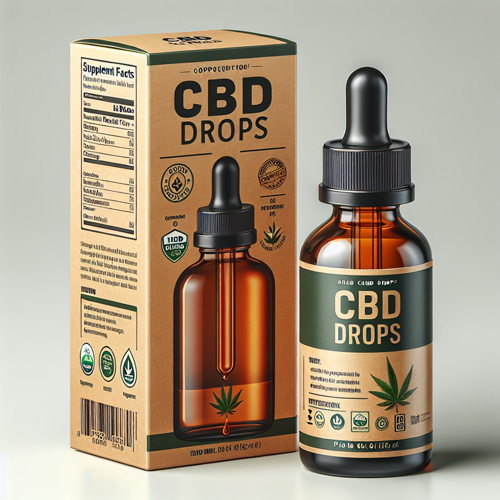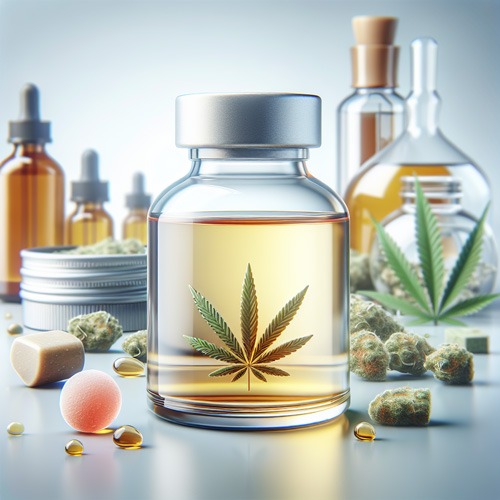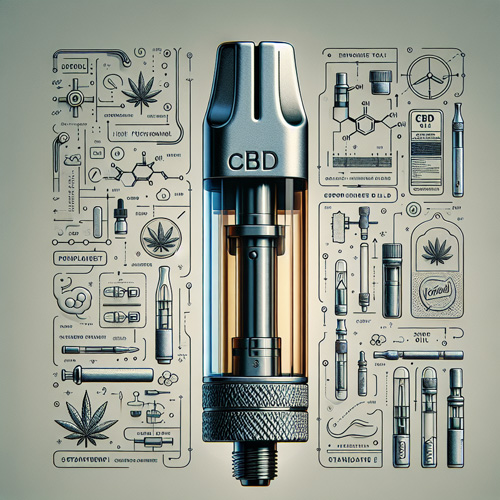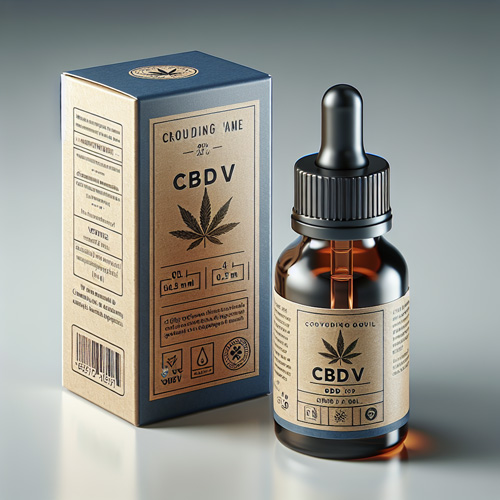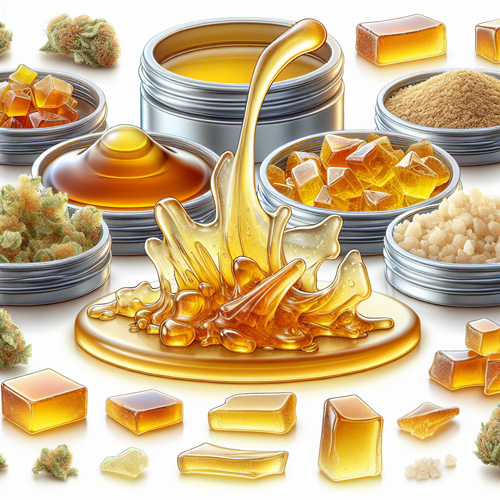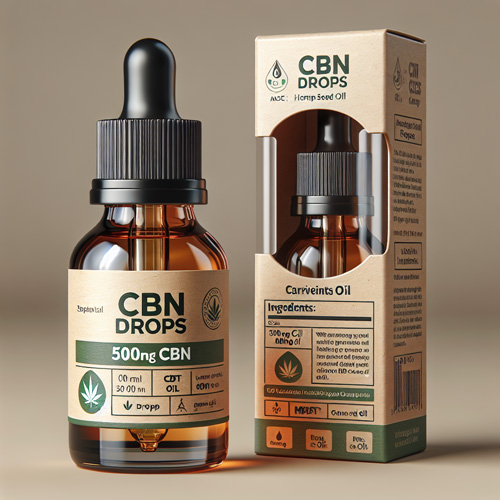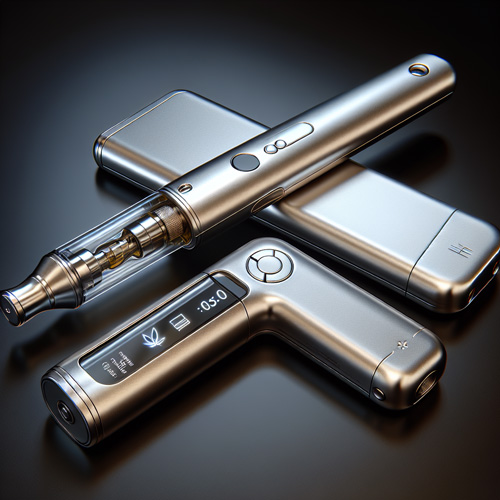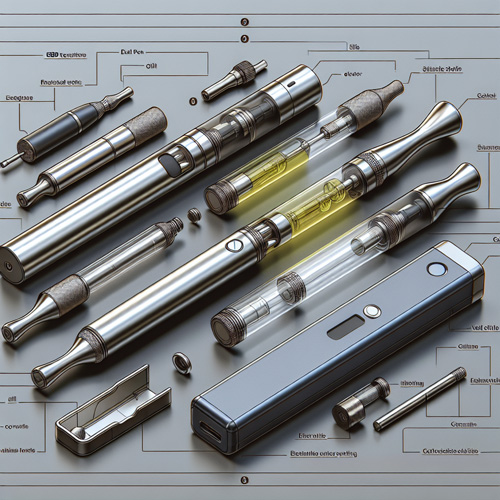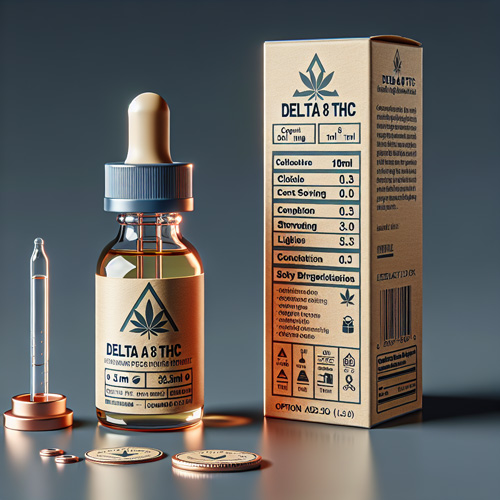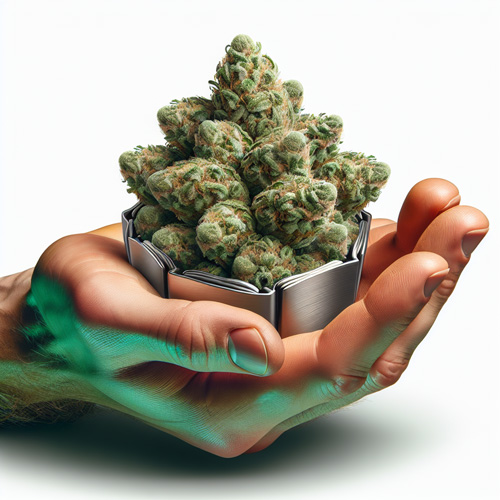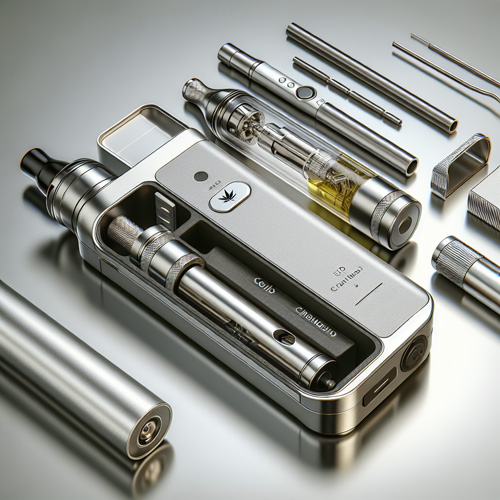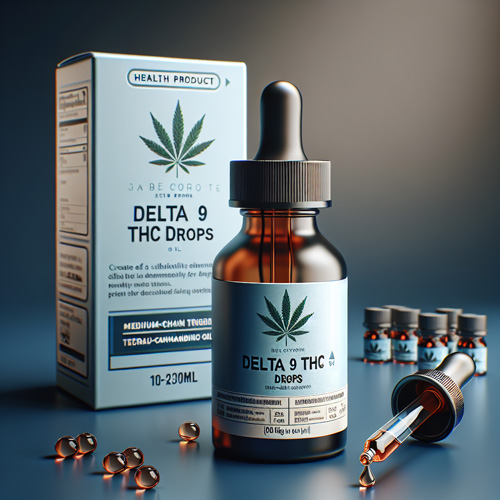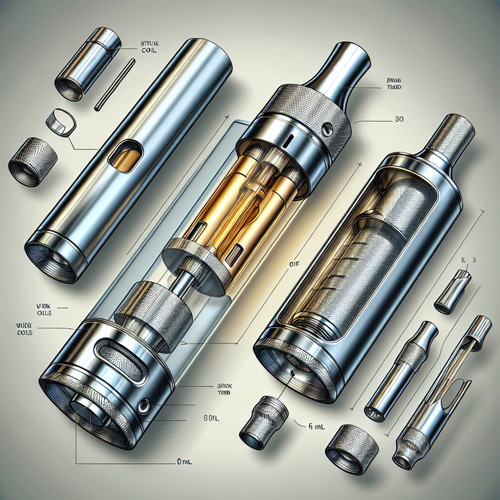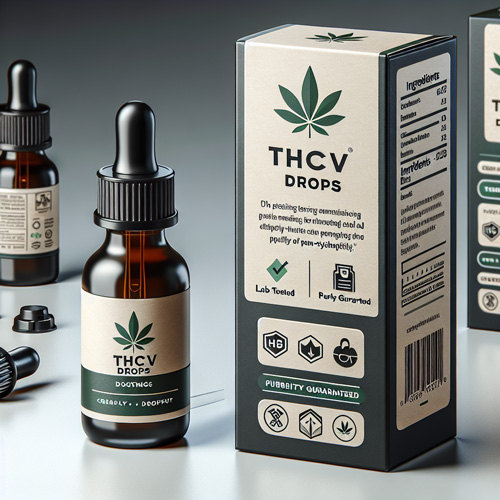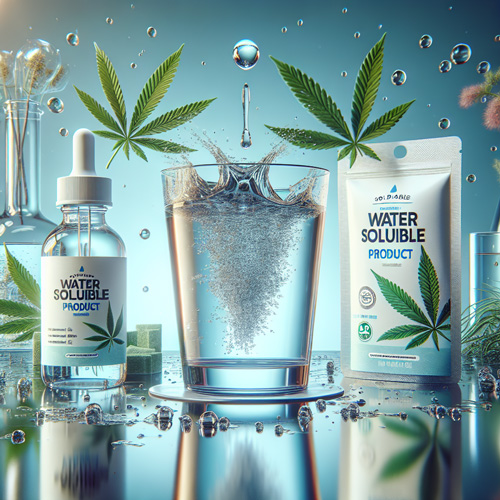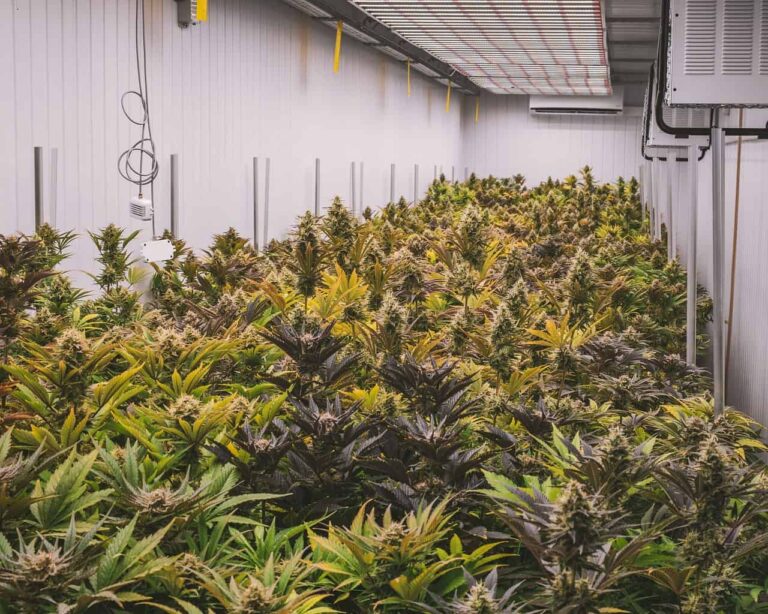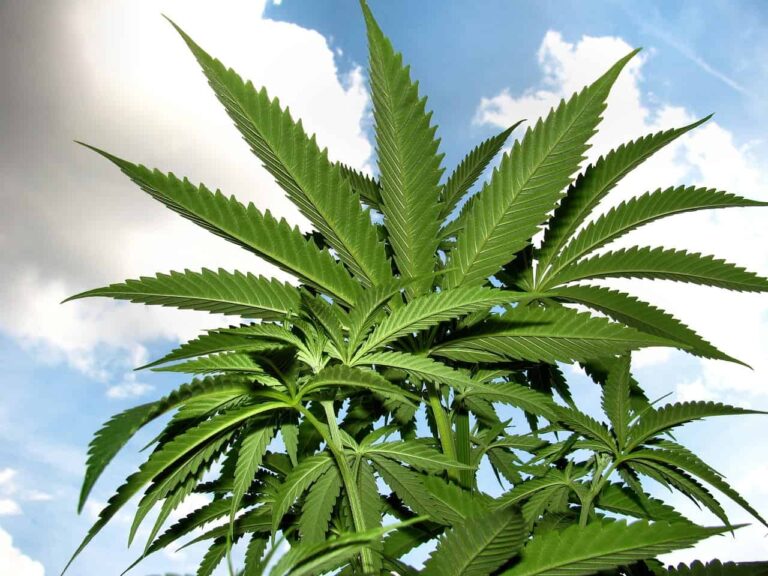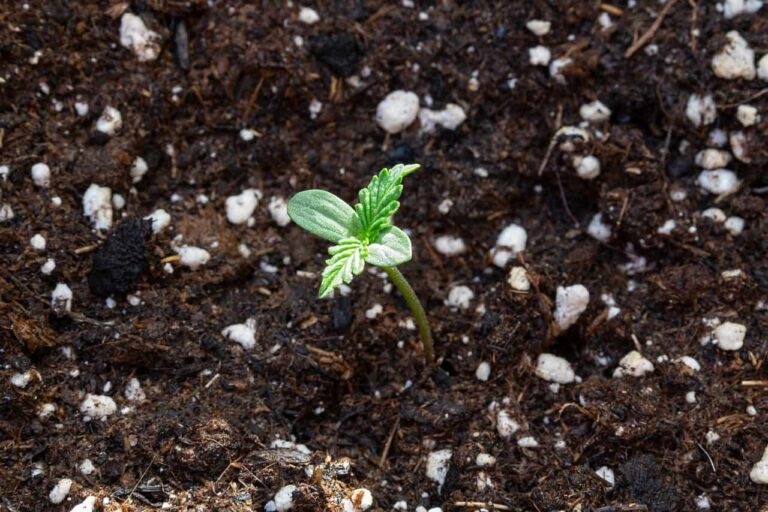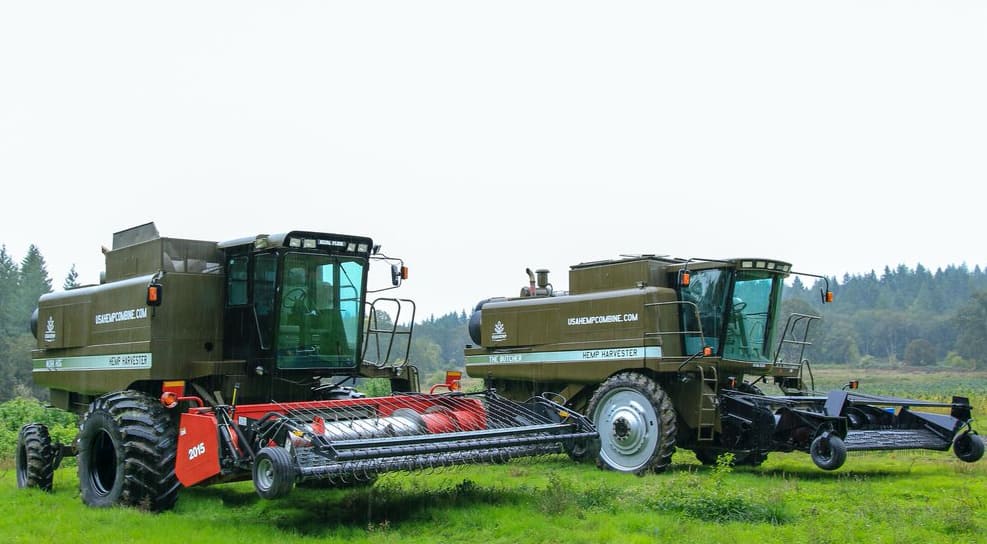
Hemp Cultivation Equipment and Tools
Hemp is a versatile and sustainable crop that has been gaining popularity in recent years.
Derived from the Cannabis sativa plant, hemp is known for its fibrous stalks, which can be used to produce a wide range of products, including textiles, paper, building materials, and biofuels. Unlike its close cousin marijuana, hemp contains only trace amounts of THC, the psychoactive compound, and is legal to cultivate in many countries.
Hemp cultivation requires specific equipment and tools to ensure a successful harvest. From planting to harvesting, the process involves specialized equipment for tasks such as bed shaping, biomass collection, and extraction. In this article, we will explore the different types of equipment used in hemp cultivation, including CBD-specific harvesters, processing equipment, and even mowers for hemp fiber.
Additionally, we will discuss the importance of using the correct equipment to maximize yield and efficiency in the hemp industry.
Benefits of Hemp Cultivation
Hemp cultivation offers numerous benefits, and the choice of growing methods depends on the desired end product. The versatility of hemp enables it to be used for various purposes, including fiber, CBD oil, and biomass.
One benefit of hemp cultivation is its fast growth rate, with some varieties reaching maturity in just a few months. This rapid growth allows for multiple harvests within a single growing season, maximizing yield potential. Additionally, hemp requires minimal pesticides and herbicides, making it an environmentally friendly crop.
When selecting farming equipment, it is crucial to consider the final hemp output. For fiber production, specialized equipment such as a hemp decorticator is necessary to separate the fiber from the stalks efficiently. In contrast, CBD-specific hemp harvesters are essential for crops intended for CBD oil extraction. These machines delicately remove the plant material while preserving the valuable CBD-rich flowers.
The choice of farming equipment is also influenced by planting density. For CBD production, a lower planting density is recommended to encourage taller plants with more abundant flower production. In contrast, non-CBD hemp crops may be grown at higher densities to harvest more biomass for fiber or other uses. Thus, considerations of planting density guide the selection of equipment needed for successful hemp cultivation.
Hemp cultivation offers a range of benefits, from its fast growth and eco-friendly nature to its versatility in end product applications. By carefully considering the final output and planting density, farmers can select the most suitable equipment for their hemp operation.
Hemp Cultivation Equipment and Tools

Hemp cultivation equipment and tools play a crucial role in maximizing the productivity and efficiency of hemp farming operations.
With the growing demand for hemp products, having the right equipment and tools is essential to ensure a successful and profitable harvest. Whether it’s specialized equipment for fiber extraction or CBD-specific harvesters for preserving delicate flowers, choosing the correct equipment based on the intended hemp output is crucial.
Additionally, considerations of planting density also guide the selection of farming equipment, as different planting densities require different equipment for optimal results. From decorticators to harvesters to mowers, the right equipment and tools can greatly enhance hemp cultivation and contribute to the success of the hemp industry as a whole.
Bed Shaper
A bed shaper is a crucial piece of equipment used in hemp cultivation to create raised beds or mounds for planting hemp crops. There are several types of bed shapers available, each designed for specific purposes in the cultivation process.
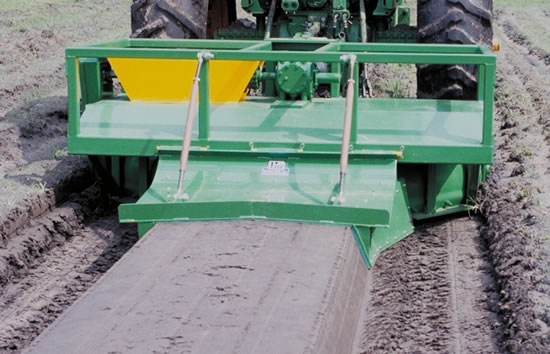
One type of bed shaper is a rotary bed shaper, which uses rotating discs or blades to shape the soil into raised beds. These bed shapers are ideal for creating well-defined raised beds with smooth, even surfaces. They help improve the drainage of the soil by preventing water from accumulating and causing waterlogging, which can be detrimental to hemp plants.
Another type is a mound bed shaper, which creates raised mounds of soil that offer improved soil aeration and drainage. This is particularly beneficial in regions with heavy or compacted soil, as the raised mounds allow roots to develop more freely. The increased aeration helps prevent root rot and promotes healthier root growth, leading to stronger and more productive hemp plants.
Using bed shapers in hemp cultivation has several advantages. Firstly, they improve soil drainage, preventing water stagnation and reducing the risk of fungal diseases. Secondly, bed shapers create raised beds or mounds, which promote better root development and allow the plants to access nutrients more effectively. Lastly, these tools save time and labor, enabling farmers to efficiently shape large areas of land for planting hemp crops.
Bed shapers play a vital role in hemp cultivation by creating raised beds or mounds, which offer improved drainage, aeration, and root development. These benefits contribute to the overall success of hemp farming, leading to healthier plants and higher yields.
Crop Markers
Crop markers are essential tools in hemp cultivation as they help mark rows and ensure proper spacing for planting seeds or transplants. The purpose of crop markers is to create precise and uniform rows, resulting in optimal plant growth and easy navigation through the field.
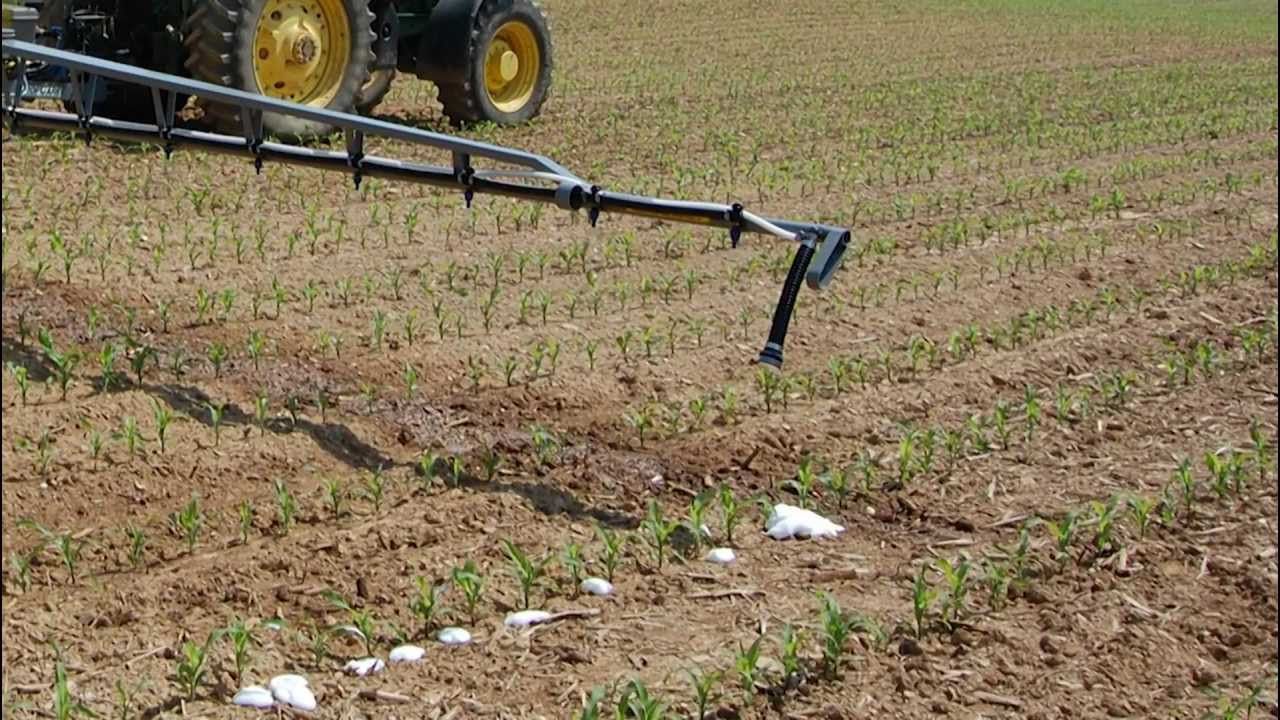
To use crop markers, farmers typically attach them to their cultivation equipment, such as tractors or planters. As the equipment moves along the field, the crop markers create visible lines in the soil, indicating the location of each row. This allows farmers to maintain consistent spacing between rows and ensures that hemp plants have adequate room for growth and access to sunlight, air, and nutrients.
There are different types of crop markers available to hemp farmers. One popular option is the disc marker, which uses disks or discs mounted on a frame to create furrows in the soil. These furrows serve as indicators for where seeds or transplants should be placed. Another type is the tape marker, which uses biodegradable tape stretched along the field to mark the rows. This type of marker is easily adjustable, allowing farmers to customize the spacing between rows.
The advantages of using crop markers in hemp cultivation are numerous. They provide precision and consistency, ensuring that hemp crops are evenly distributed and properly spaced. This leads to more efficient planting, easier weed control, and improved access for equipment during the growing season. Additionally, crop markers help farmers maximize their yields by optimizing plant growth and minimizing competition between plants.
Crop markers play a vital role in hemp cultivation by marking rows and ensuring proper spacing for planting seeds or transplants. They come in different types, such as disc markers and tape markers, each with its own advantages. By using crop markers, hemp farmers can achieve uniform row spacing, leading to healthy and productive crops.
Disc Harrow
A disc harrow is a crucial piece of equipment used in hemp cultivation for soil preparation. Its main role is to break up clumps of soil and level the ground, creating a smooth and optimal surface for planting.
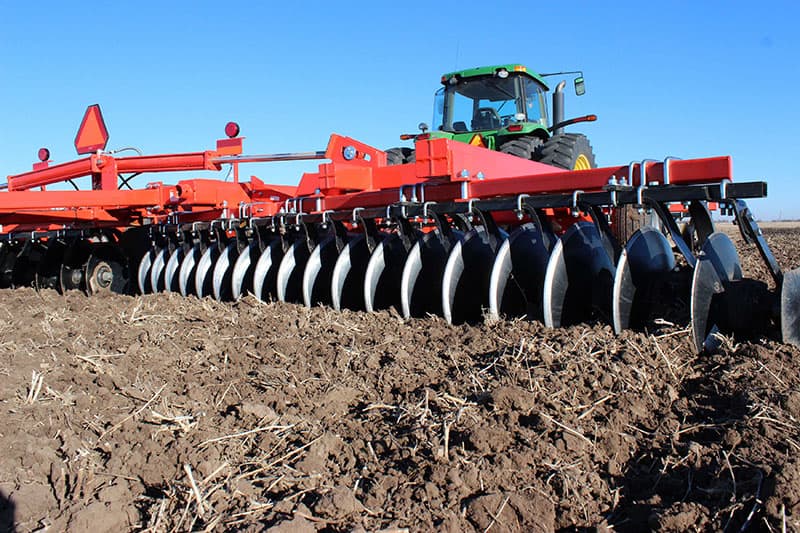
When preparing the soil for hemp farming, the disc harrow is used after initial plowing or tilling. The rotating discs on the harrow’s frame effectively cut through the soil, breaking up any large clumps and loosening compacted areas. This process helps to improve soil aeration, drainage, and seedbed preparation, which are essential for successful hemp cultivation.
Disc harrows come in different types and sizes to suit various farming needs. Tandem disc harrows consist of two rows of discs that work together to pulverize soil effectively. Offset disc harrows have staggered discs that allow for deeper penetration and enhanced soil mixing. Additionally, there are disc harrows with adjustable disc angles, which provide flexibility for customizing soil preparation according to specific hemp cultivation requirements.
The size of the disc harrow mainly depends on the acreage and topography of the hemp field. Smaller disc harrows are suitable for compact fields or areas with limited space, while larger ones are used for vast hemp farms. It is essential to select the appropriate disc harrow size to ensure effective soil leveling and clump breaking throughout the entire field.
The disc harrow plays a vital role in hemp cultivation by breaking up clumps and leveling the soil before planting. Farmers can choose from various types and sizes of disc harrows depending on their specific needs, enabling them to achieve optimal soil preparation for successful hemp growth.
Planters and Seeders
Planters and seeders play a vital role in hemp cultivation by ensuring accurate and efficient seed placement. These specialized pieces of hemp farming equipment are designed to improve the planting process and maximize crop yield.
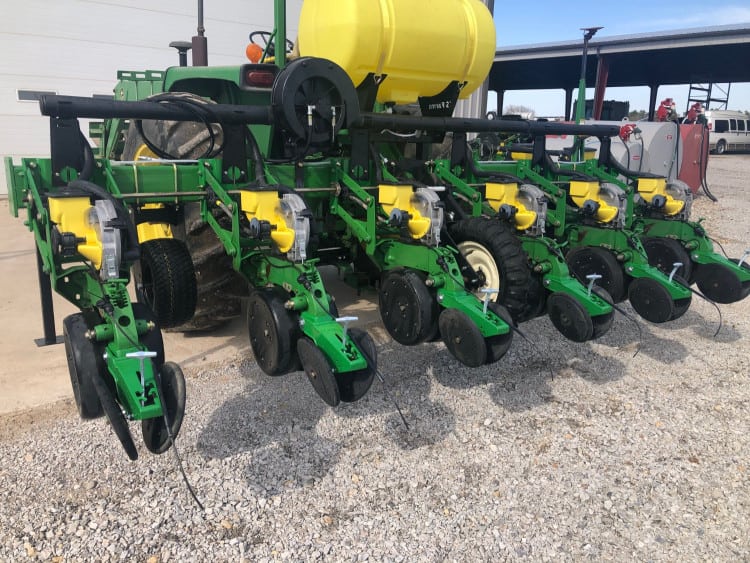
Various types of planters and seeders are available in the market to suit different hemp cultivation needs. One popular type is the precision planter, which uses advanced technology to precisely place seeds at a consistent depth and spacing. This helps optimize plant growth and reduce waste. Popular brands like John Deere and Case IH offer precision planters specifically designed for hemp farming.
Another commonly used planter is the broadcast seeder, which evenly spreads seeds across the field. This type of seeder is suitable for large-scale hemp farms and allows for faster planting. Popular models include the Brillion Sure Stand and Great Plains 1006NT.
By using planters and seeders, hemp farmers can significantly improve the efficiency and accuracy of seed placement. This leads to better plant establishment and uniform crop growth. Additionally, using specialized equipment reduces manual labor and saves time during the planting process.
Planters and seeders are essential hemp farming equipment that contribute to successful seed placement and optimal crop yield. Investing in quality planters and seeders from reputable brands can greatly enhance the efficiency of hemp cultivation operations.
Fertilizer Spreader
Using a fertilizer spreader is of utmost importance in hemp cultivation as it plays a vital role in ensuring optimum nutrient distribution. A fertilizer spreader is a specialized piece of equipment designed to evenly distribute fertilizers, which are essential for promoting healthy plant growth and maximizing yield.
There are different types of fertilizer spreaders available, each varying in size and functionality to cater to the specific needs of hemp farmers. Broadcast spreaders are commonly used for large-scale operations, as they can cover a wide area efficiently and quickly. These spreaders have a hopper that holds the fertilizer, and a spinning disk or rotor that evenly disperses the nutrients across the field.
Alternatively, drop spreaders provide a more precise application, ideal for smaller hemp farms or areas that require accurate nutrient placement. These spreaders have a hopper that releases the fertilizer directly beneath the equipment, ensuring a controlled distribution pattern.
A fertilizer spreader helps maintain the uniformity of nutrient application, which is crucial for promoting balanced plant growth and preventing nutrient deficiencies. By evenly dispersing the fertilizers, these spreaders ensure that each hemp plant receives the necessary nutrients for optimal development.
Utilizing a fertilizer spreader in hemp cultivation is essential for achieving healthy plant growth and maximizing yield. The different types of spreaders available offer flexibility based on the size and needs of the farm, ensuring even distribution of nutrients throughout the field. By investing in a suitable fertilizer spreader, hemp farmers can effectively enhance their crop’s nutrient uptake and overall productivity.
Weed Sprayers and Herbicides
Weed control is a crucial aspect of hemp cultivation, as weeds compete with hemp plants for nutrients, water, and sunlight, ultimately affecting crop yield. To effectively manage weed growth, hemp farmers rely on weed sprayers and herbicides. These tools help eliminate or suppress weed populations, ensuring that hemp plants receive the necessary resources for optimal development.
There are various types of weed sprayers commonly used in hemp farming, including backpack sprayers, ATV sprayers, and boom sprayers. Backpack sprayers provide flexibility and ease of use, allowing farmers to treat specific areas or smaller plots. ATV sprayers are ideal for larger farms and enable farmers to cover more ground efficiently. Boom sprayers, on the other hand, are suitable for even larger operations and can cover a wide area with their spray nozzles.
When it comes to herbicides, there are different options available, such as pre-emergent herbicides and post-emergent herbicides. Pre-emergent herbicides are applied before weeds emerge and help prevent their growth. Post-emergent herbicides, on the other hand, are used to control existing weeds. It is important to choose herbicides that are specifically labeled for hemp cultivation and to follow the instructions provided to ensure proper application and safety.
Some recommended brands or products that have proven effective in weed control for hemp farming include Roundup, Atrazine, and Glyphosate. These herbicides have been widely used in various agricultural settings and are known for their efficiency in controlling weeds.
To use herbicides safely and effectively, it is essential to follow best practices. This includes wearing protective clothing, using the correct dosage, avoiding spray drift, and adhering to any restrictions or precautions mentioned on the herbicide label. Additionally, it is crucial to consider the potential impact on the environment and neighboring crops when applying herbicides.
Weed sprayers and herbicides play a vital role in weed control for hemp cultivation. By effectively managing weed populations, farmers can minimize competition for nutrients, water, and sunlight, ultimately improving overall crop yield. Using the appropriate weed sprayers and herbicides, following best practices, and choosing reputable brands or products are essential for successful weed control in hemp farming.
Ecologically Friendly Alternatives To Herbicides
In addition to using herbicides for weed control in hemp cultivation, there are several environmentally friendly alternatives that can be employed.
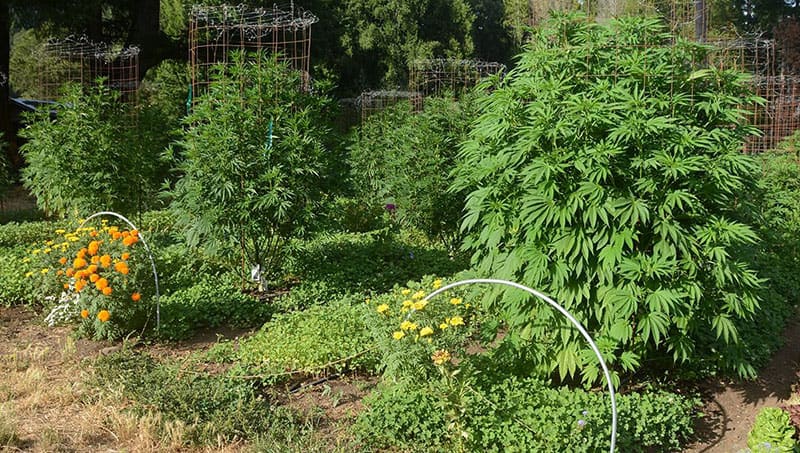
Companion planting is a great way to manage weeds without the use of chemical herbicides. By planting desired crops like corn, sunflowers, and beans alongside hemp plants, weed growth can be inhibited by providing dense foliage and shade. Additionally, farmers may consider cover crops such as rye and oats to suppress weeds between seasons. Cover crops can also help improve soil fertility and reduce erosion.
Physical barriers such as plastic or fabric weed mats are also effective in controlling weeds while eliminating the need for herbicides. Weed mats should be applied prior to sowing and remain on the field throughout the season; when removed after harvest they can be reused again for future plantings. Mulching is another technique that helps block sunlight from reaching weed seeds and ultimately prevents their germination.
These eco-friendly alternatives provide effective methods of managing weeds in hemp farming without relying on harmful chemicals. By incorporating these techniques into their crop management strategies, farmers can achieve successful weed control while minimizing environmental impact.
Plant Stands and Trellises
Plant stands and trellises are essential tools in hemp cultivation as they serve multiple purposes that are crucial for the successful growth and development of the plants. These tools provide plant support and encourage vertical growth, resulting in healthier and more robust hemp plants.
By using plant stands and trellises, hemp farmers can maximize space utilization in their fields. These tools allow for vertical growth, which is especially beneficial in situations where acreage is limited. With the use of trellis systems, farmers can train their hemp plants to grow upward, making efficient use of the available space and increasing the number of plants per acre.
In addition to space efficiency, plant stands and trellises also contribute to better overall plant health. They help keep the hemp plants upright, preventing them from bending or breaking under their own weight. This provides better air circulation and reduces the risk of diseases caused by moisture accumulation or contact with the ground.
Furthermore, trellises provide support for the delicate flowers of hemp plants, minimizing the damage caused by wind or heavy rain. This is particularly important during the flowering and harvesting stages when the plants are most vulnerable.
The use of plant stands and trellises in hemp cultivation is essential for promoting healthy growth, maximizing space utilization, and supporting the overall well-being of the plants. These tools play a vital role in ensuring successful hemp cultivation by providing plant support, encouraging vertical growth, and protecting delicate flowers.
Harvesting Equipment
When it comes to harvesting hemp, farmers have a variety of equipment options to choose from. One popular choice is CBD-specific hemp harvesters, which are specifically designed for biomass harvesting. These machines are efficient and can quickly cut and collect the plants, making the harvesting process more streamlined and less labor-intensive.
However, when it comes to harvesting hemp flowers, a more delicate approach is needed. Hand-cutting is often the preferred method for harvesting hemp flowers, as it allows for careful selection and preservation of the highest quality buds. This ensures that the CBD content remains intact and that the flowers fetch a higher price in the market.
When selecting harvesting equipment, there are a few key considerations to keep in mind. Firstly, farmers should consider the scale of their operation and choose equipment that can handle the volume of their hemp crop. Additionally, the quality and efficiency of the equipment should be taken into account, as well as any specific features or capabilities that may be required for their particular operation.
Overall, choosing the right harvesting equipment is essential for maximizing efficiency and ensuring the quality of the harvested hemp. Whether it’s a CBD-specific hemp harvester for biomass or the careful hand-cutting of hemp flowers, choosing the right equipment can make all the difference in a successful harvest.
Decortication Machines
Decortication machines play a crucial role in the hemp cultivation process by efficiently separating hemp stalks and processing hemp fibers. These machines are designed to remove the tough outer layer of the hemp stalks, known as the bast fiber, from the softer inner core, known as the hurd.
Decortication is an important step in the processing of hemp fibers, as it helps to separate the stalks into usable components. After decortication, the bast fiber can be processed further for various applications, including textiles, construction materials, and paper products. The hurd, on the other hand, can be used for animal bedding, mulch, or as a sustainable alternative to traditional building materials.
One popular decortication machine is the R-2 decorticator system, developed by CannaSystems. This semi-portable machine is capable of processing up to five tons of hemp per hour, making it suitable for medium to large-scale hemp cultivation operations. With its modular design and high efficiency, the R-2 decorticator system offers farmers a reliable solution for processing their hemp stalks and obtaining high-quality fibers.
Another notable decortication technology is the Continuous Countercurrent Reactor (CCR) developed by PureHemp Technology. This innovative machine not only separates the hemp stalks into bast fiber and hurd but also efficiently converts the hurd into pulp and sugar co-products. The CCR system is known for its high throughput and low energy consumption, making it an environmentally friendly option for hemp farmers.
Overall, decortication machines are essential for processing hemp fibers and maximizing the value of the hemp stalks. By investing in the right decortication equipment, farmers can streamline their hemp cultivation operations and contribute to the growth of the hemp industry.
Fiber Separators
Fiber separators play a crucial role in hemp cultivation by efficiently separating the valuable hemp fibers from the rest of the plant material. These separators are essential for processing hemp stalks and obtaining high-quality fibers that can be used for various applications.
The importance of fiber separators lies in their ability to significantly improve the efficiency and productivity of hemp cultivation operations. By separating the fibers from the plant material, fiber separators allow farmers to obtain a higher yield of usable fibers, which can then be processed further for various industries.
Fiber separators work by mechanically breaking down the hemp stalks and separating the fibers from the inner core, also known as the hurd. This process involves crushing the stalks and using technology like decorticators to separate the bast fiber, which is the valuable outer fiber layer, from the hurd.
There are different types of fiber separators available in the market. Some popular options include the R-2 decorticator system by CannaSystems and the Continuous Countercurrent Reactor (CCR) developed by PureHemp Technology. These separators offer features like modular design, high efficiency, and high throughput, making them suitable for medium to large-scale hemp cultivation operations.
Fiber separators are essential equipment in hemp cultivation as they enable farmers to separate the valuable hemp fibers from the plant material. With various types of separators available, hemp farmers can choose the most suitable option to enhance their processing efficiency and obtain high-quality fibers for different industries.
Biomass Harvesters
Biomass harvesters play a crucial role in industrial hemp cultivation by efficiently harvesting hemp plants for their biomass. These specialized machines are designed to streamline the harvesting process, allowing farmers to maximize their yields and increase productivity.
Biomass harvesters are specifically engineered to cut and collect the whole hemp plant, including the stalks, leaves, and flowers. This biomass can then be further processed for various applications such as biofuel, fiber production, or extraction of cannabinoids like CBD.
There are different types of biomass harvesters available, each offering unique features and capabilities. One popular type is the single-pass combine harvester, which combines cutting, collecting, and chopping the plants in one operation. This type of harvester is ideal for large-scale industrial hemp cultivation, as it allows for efficient harvesting in a shorter span of time.
Another type is the row-independent harvester, which is designed to harvest hemp plants grown in wide rows or on beds. These harvesters use an innovative cutting mechanism that can adapt to different row widths, ensuring a clean and precise harvest.
Some biomass harvesters also come with additional features such as the removal of excess plant material, precision cutting to avoid damage to delicate flowers, and equipment modifications for different hemp varieties.
Hemp for biomass harvesters are specialized machines essential for industrial hemp cultivation. With their efficiency and capabilities, these harvesters play a vital role in maximizing yields and streamlining the harvesting process for hemp biomass.
Best Practices for Growing Hemp
When it comes to growing hemp, there are several best practices to consider in order to optimize the cultivation process and ensure a successful crop. One of the first considerations is the planting method. Whether it’s planting in wide rows, using beds, or adopting a more traditional method, the choice of planting method will impact the subsequent harvesting process.
For wide rows or bed planting, it is recommended to use a row-independent harvester. These harvesters are designed to adapt to different row widths, resulting in a clean and precise harvest. They also come with features such as precision cutting to avoid damage to delicate flowers and modifications for different hemp varieties.
In contrast, for large-scale industrial hemp cultivation, a single-pass combine harvester is often the preferred choice. This type of harvester combines cutting, collecting, and chopping the plants in one operation, allowing for efficient harvesting in a shorter span of time.
Regardless of the planting method chosen, it is important to consider the purpose of growing hemp. This will help determine the variables in harvesting methods and the tools required. For example, if biomass is the goal, utilizing biomass harvesters that can cut and collect the entire plant, including stalks, leaves, and flowers, is recommended. On the other hand, if the focus is on extracting CBD or fiber production, specific harvesting equipment tailored to those purposes should be considered.
By selecting the appropriate planting method and adapting the harvesting methods and tools to the purpose of growing hemp, farmers can optimize the cultivation process and increase the likelihood of a successful hemp crop.
Conclusion
In conclusion, investing in advanced hemp cultivation equipment and tools is crucial for ensuring successful hemp farming and processing. These specialized tools offer numerous benefits, including increased efficiency, precision, and versatility.
Using the right equipment can significantly reduce labor costs and time spent on manual harvesting and processing tasks. Advanced tools such as row-independent harvesters and single-pass combine harvesters are designed to adapt to different row widths and efficiently harvest large-scale industrial hemp crops.
Depending on the specific goals of hemp cultivation, different equipment may be required. Biomass harvesters are ideal for those focusing on biomass production, as they can effectively cut and collect the entire plant, including stalks, leaves, and flowers. For CBD or fiber production, specific harvesting equipment tailored to those purposes is recommended.
Throughout the various stages of hemp cultivation and processing, several essential tools are needed, such as bed shapers for preparing wide rows or beds, processing equipment for extracting valuable components from the plant material, and mowers for hemp fiber. These tools play a crucial role in achieving optimum yields and high-quality hemp products.
To stay competitive in the rapidly growing hemp industry, it is essential to invest in the correct hemp cultivation equipment and tools. By utilizing advanced equipment, farmers can maximize their efficiency, yield, and profitability in this booming market.


